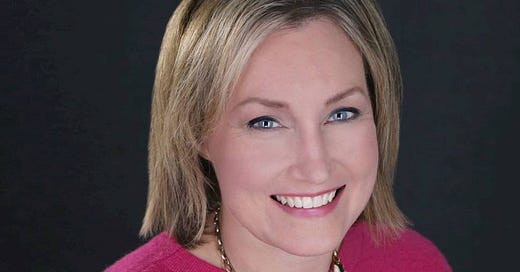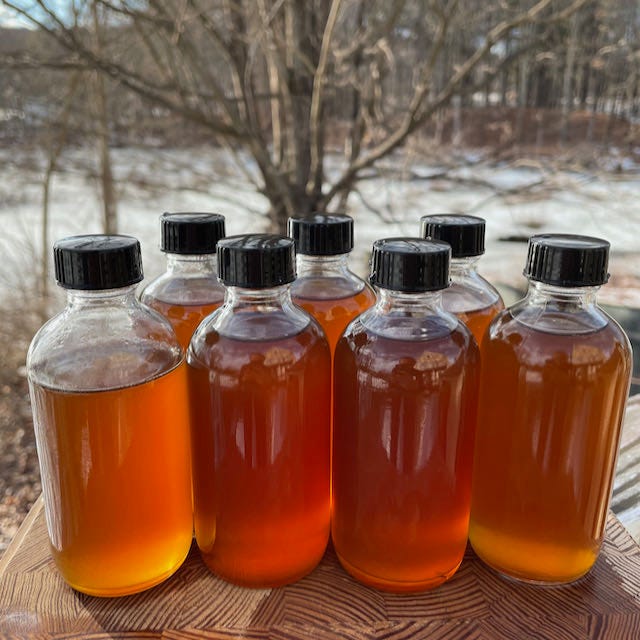Beating Burnout at Work
A Conversation with Paula Davis, founder of the Stress & Resilience Institute
Welcome to the Quarantine Creatives newsletter, a companion to my podcast of the same name. If you like what you’re reading, you can have this newsletter delivered to your inbox every Sunday.
I’m Back!
I’m excited to report that after a relaxing month off in February, I am back with new shows and will continue to make more for the foreseeable future! I had a fascinating new episode this past week, which I detail below.
One change: instead of two episodes per week, I am scaling back to one per week for now, which will be released on Thursdays. I hope this will give me some more time to find some balance and explore other areas that make me curious. Speaking of which…
Earning My New England Stripes
As I mentioned in last week’s newsletter, I have taken on a new hobby. I’ve always admired the beautiful maple trees in our yard, especially in the fall when they turn bright shades of red and orange, but they’ve always been purely decorative.
This year, we decided to tap our maple trees and turn the sap into maple syrup. (I’ve been documenting the whole process over on my Instagram if you’ve missed it)
At the time of last week’s newsletter, I was preparing to boil my first batch of sap. I have now successfully completed two boils. The process is both labor and fuel intensive. It starts with around 10 gallons of raw sap, which is really just slightly sweet water. The sap gets boiled down over a wood fire outdoors for 8-10 hours. The fire needs to stay hot, so it takes a lot of tending and a lot of wood!
After that, the sap is brought indoors, where the boil continues on the stove. At this point, it’s usually around 3 gallons that I bring inside. That gets reduced down to about a quart.
The really cool thing is watching for the point when the sap becomes syrup. I keep a candy thermometer in the pot for most of the indoor boil, and it holds steady at 212ºF the whole time. This is simply because the sap is mostly liquid water, and when water gets above that temperature, it is no longer a liquid but steam. After most of the water has boiled off and there’s mostly sugar left, the rate of the boil changes and the mercury on the thermometer suddenly begins to rise. At 219ºF it becomes syrup. Pretty cool, huh?
The weather has been a bit erratic and will continue to be into this week. I’m hoping to sneak at least one more batch and maybe two in before it’s really springtime!
Episode 74- Paula Davis
This week, I spoke with Paula Davis. She is the founder of the Stress and Resilience Institute, which studies the effects of burnout and stress on organizations and and helps build resilience that allow employees to thrive. She is also an author, and her new book is Beating Burnout at Work: Why Teams Hold the Secret to Well-Being and Resilience. It takes a research-based approach to the causes and solutions to burnout.
Paula first helped me understand the distinction between burnout and stress:
“We think burnout is an interchangeable word with just general stress. We lose the perspective that stress exists on a continuum and that it turns into burnout when you experience chronic exhaustion, cynicism, and just feeling like you’re not making an impact. So that’s when you know you’ve crossed the line over into something else. Burnout was always intended and does mean something that happens in the workplace. So I define burnout as the manifestation of chronic workplace stress.”
For Paula, this issue is very personal. She had been working as a lawyer in commercial real estate when she experienced her own symptoms of burnout more than a decade ago. She described the progression of her burnout, which took place over the course of a year:
“It was just these little things in the beginning where I could slowly feel myself kind of disconnecting or unplugging from any sort of joy or impact that I felt like I was having in my career and then that just snowballed over time. I didn’t want to go into work on Monday mornings, and then I stopped playing my co-ed softball league and I stopped hanging out with my friends as much. All of these other pieces started to ramp up. I started to get sick more frequently. I was having panic attacks eventually very frequently. I was in the Emergency Room twice because I had stomachaches that were so bad. I knew there was something about work that was causing all this.”
Companies are just beginning to learn about ways to prevent burnout, and their policies often take the form of an extra vacation day or access to wellness programs like meditation. While these have an impact, Paula told me that the focus should be on the company and its culture, and not on the individual:
“I entered this conversation back when I had burned out along the lines of what did I do wrong? What could I have done differently? This is my problem to have dealt with. But in reality, we know very much so that it’s a systemic issue.”
Paula also described to me some of the strategies that she employs when talking to CEOs and managers about the impacts of burnout:
“I like to talk to them about bottom line aspects, that’s one of the ways bring people along. Burnout is very heavily tied to rates of errors, and attrition, and engagement and other things that you can at least kind of put some numbers around. It’s not a stretch for a lot of, at least larger organizations, for burnout to be a tens of millions of dollar problem.”
Of course, the pandemic has added a lot of stress onto so many employees right now, and Paula addresses a lot of that in her book. While remote work and flexible work have helped many companies weather this past year, Paula does not feel like those are permanent solutions, at least not in a full time capacity:
“We’re doing the best that we can with what we have right now, it’s just not a sufficient replacement to the physical interactions that most people really want to have, at least some point, in their work life. I really hope as we think about the future of work that we don’t engineer out connection. I’m a big fan of giving people autonomy, I’m a big fan of letting people work from home, and it’s going to be different for everybody, but I really hope we take a balanced approach to it.”
Paula’s book Beating Burnout at Work: Why Teams Hold the Secret to Well-Being and Resilience is available for preorder now and will be released on March 16. Her full interview provides lots more insights into the problems of burnout, her own experience with it, and how workplaces will be changed because of the pandemic.
What’s Coming…
Next week, I’m scheduled to interview Jim McKelvey, who is the co-founder of Square, the company that makes those little white credit card readers for cellphones that you’ve probably seen at craft fairs and farmers’ markets. We’ll discuss his book The Innovation Stack that looks at entrepreneurship, plus some of his other passions and hobbies like glass blowing and maker spaces. Look for that show on Thursday wherever you listen to podcasts.
If you have questions, comments, thoughts, ideas, or anything else that you’d like to share, please feel free to email me anytime: hracela@mac.com
If you’re an Apple Podcasts user, please consider leaving a rating or review for Quarantine Creatives. It only takes a minute, but it helps bring in new listeners.
And please consider sharing this with a friend that you think might enjoy reading this, or better yet, share it on social media so you can tell hundreds of friends!
If you’ve missed past issues of this newsletter, they are available to read here.
Stay Safe!
Heath







